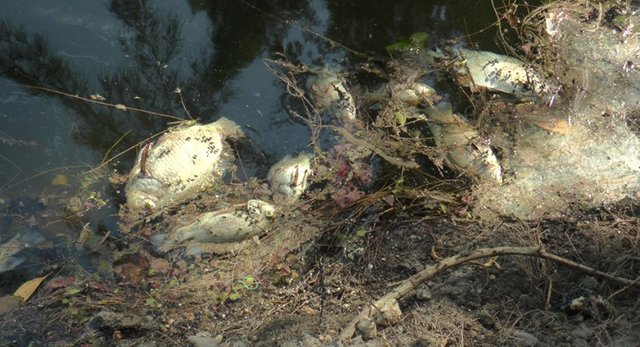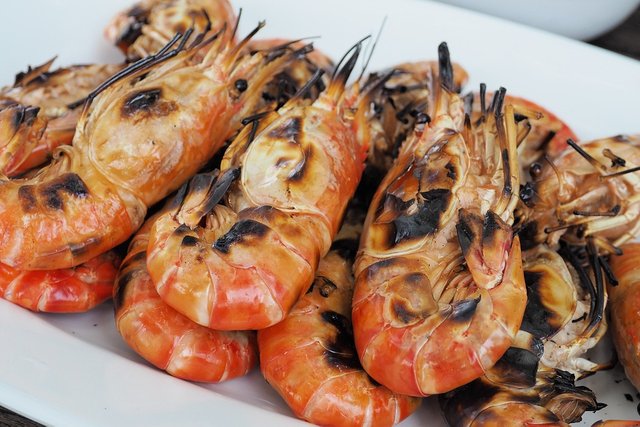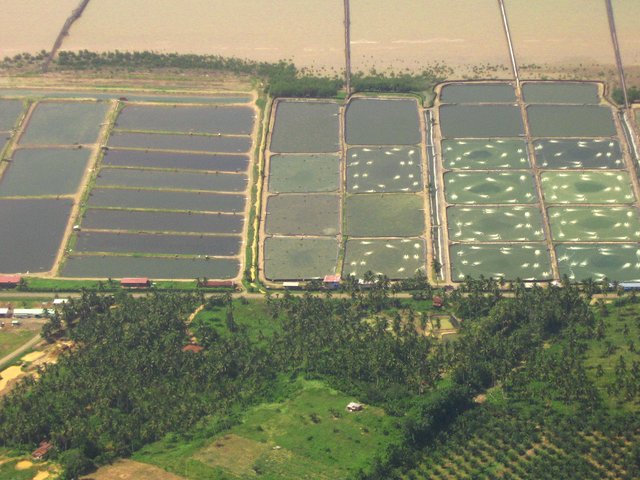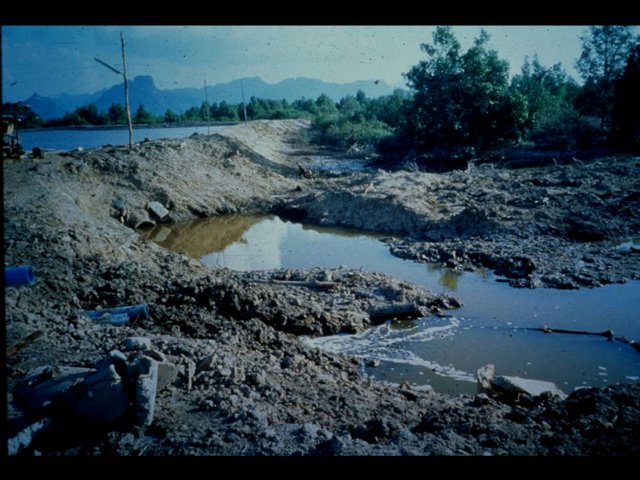Make the world a better place – Part 4 – Thailand’s dirty shrimp industry and its vicious cycle
Most of the worldwide shrimp production is located in Southeast Asia. In 2011 Thailand's prawn cultivation climbed up to 600,000 tonnes reaching roughly 20 percent of the world supply.
Aquacultures are dominating the production in Thailand. Shrimp farms have massively changed landscapes and cleared mangrove woods on a large scale. The gigantic shrimp industry is unscrupulous.
These farms spring up like mushrooms to keep up with the world’s demand.
The breeding of shrimp as a monoculture is not only susceptible to viruses and bacteria – besides ecological and health issues it brings negative impacts to the society.
In Thailand a typical shrimp farm needs to move every few years. The water and the soils of the breeding ponds are unusable after some years as they are heavily contaminated by bacteria and the high usage of chemicals. Contaminated grounds are left behind.
It is a vicious cycle. For the next location a further piece of the forest is taken down.
Estimates point out that in the last 50 years, 80 percent of Thailand’s mangrove woods were cleared.
Around 10.000 shrimp farms are supposed to exist in Thailand. In a lot of cases the water pumped with chemicals will not be disposed. Instead it is poured into the nature - unfiltered. The untreated sewage harms the regions.

Image credit - Death fish in Thailand after a shrimp farm in the region released contaminated water
Missing closed water circulations lead to the prawns breeding in a shockingly high stocking density. They grow in an awful soup of their own faeces, nutrients and further chemicals - where they are constantly being fatted.
To combat the increasing resistance of pathogens to used antibiotics farmers pump in more medication into the breeding ponds to avoid widespread deaths.
That behaviour could not stop the Early Mortality Syndrome (EMS) epidemic to spread in Thailand. In 2013 the cultivation output fell by 40 percent in that year due to the deadly disease.
The rise of Thailand’s shrimp industry up to the record high in 2011
Thailand’s shrimp cultivation - annually:
| Year | Thailand's shrimp production in tonnes |
|---|---|
| 1984 | 10 000 |
| 1994 | 250 000 |
| 2006 | 350 000 |
| 2011 | 600 000 |
Most of the workers on those farms will not be Thais. 90 % of the workers in Thailand’s shrimp industry are migrants. They come from Myanmar, Laos and Cambodscha and work under miserable - at times under slavery - conditions. Labour abuses are still common.
These conditions in the production chain even led the European Union raise a weighty tariff on Thai shrimp imports. Also a total ban would be an option. To satisfy the demand of US households 94 percent of the shrimp has to be imported.
What can you do?
- Consume less shrimp and avoid if possible imported shrimp
- Show an interest on where the shrimp come from
- Make the right choice – watch out for certificated goods and support environmentally sustainable fishing/aquaculture
- Watch your own health – shrimp are healthy when their origin is clean. They are low in calories and fat, contain essential amino acids and are rich in other valuable nutrients but
do not consume products made under the described conditions. Avoid hazardous toxins and antibiotics which imported shrimp could contain.

- Make the world a better place series - read my blog entries on palm oil deforestation in Indonesia and Malaysia (Part 3), the elephant conflict in Sri Lanka (Part 2) and on the issue of our rising avocado demand (Part 1)
- Check out "The Steemians Post" - Steemit's first online newspaper



I do appreciate this information and am definitely following you because you have important information...
Recently, I purchased a box of Thai shrimp. They were $3/lb. (a very cheap price where I live) which is why I purchased them. They were not crisp like the shrimp I usually buy. They did not look like typical shrimp and were a little soft and strange to chew, but I'm not a shrimp expert.
I recently went vegan, so my shrimp consumption is nil. Nonetheless, your article is a real eye opener. I'm going to think twice before ever purchasing Thai shrimp again!
Very interesting post. Thanks for sharing!
As I am getting more concerned about what I am eating (and giving to my children), I will try to follow your advice. I am actually trying to avoid buying any food stuff from Asia because they are known to have "other sanitary criteria" if I can say it that way...
I prefer buying local food from tiny producers as often as possible and when it is not possible, I try to buy stuff not coming from to far.
There is a Bunchaton of free range, grass fed, (Gluten Free, no GMOs) shrimp caught on the Gulf Coast. Of course Texas does it best.
Buy Texas Shrimp.
@everittdmickey thanks for this great response. I assume Texas Shrimp is tasty. Yes, buy locally if you have the chance and if it comes from sustainable fishing.
Oh NOT just fishing. Texas has Shrimp Farms too.
To mention just two. There are many more.
This might be of interest.
http://www.aquacultureoftexas.com/farminginfo.htm
According to the Texas Department of Agriculture there was Two Million pounds (2,000,000 / 2,000 = 200,000 tons. 1/3 that of Thailand not counting the boats) of shrimp grown in Texas in 2012. Odds are there is more of it grown now than then.
????
Shrimp are not fed grass....?
:) I read his response in a humerous way with gras fed meaning living in their natural habitat etc.
You mention prawn only, does the information pertain to shrimp too?
I use to love shrimp but after not having them for some time I decided to purchase some from my local grocery store and they were suspect.
I know I probably should have went to the farmers market but hey I was already there. However, I did purchase them from the seafood counter and got a chance to ask the monger some questions about the shrimp. He told me they were wild caught in the gulf. I was informed that the shrimp from Thailand were farm raised. So, I got the wild caught.
They had a taste not like I remember them ever having. They tasted tainted. As if they were treated with some kind of solution mixture. Yuck! Is to say the least. I figured of course there was no way they were going to be able to clean up a huge oil spill like BP had. What happened in the gulf has ruined their seafood and most likely the entire industry in that area for good. And now they are just trying to pass off these chemical filled crustaceans. Needless to say, I haven't had any shrimp since.
Hi silverton,
I can imagine your appetite was hit by this experience. Thanks for sharing it. Yes, it pertains for prawns and shrimps. The shrimp farms in Thailand actually focussed on the black tiger prawns but then they went over to the white Pacific shrimp (Giant Tiger Prawn) due to higher yields, disease-resistancy and a faster growth. You can calculate 120 day until they can be sold - allowing up to three cycles each year.
Oh, the human ad ecological cost of our greed